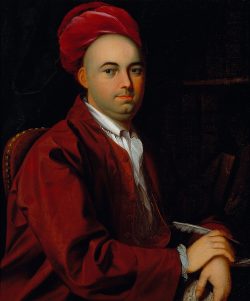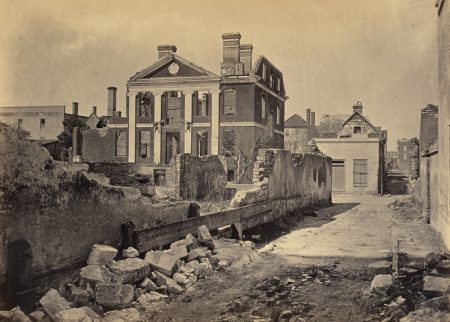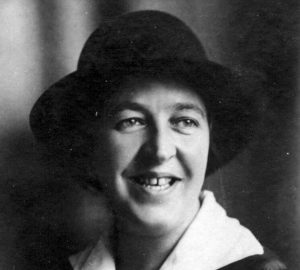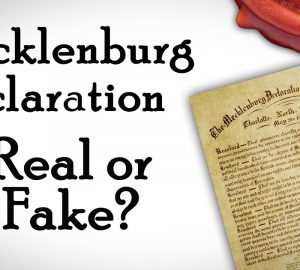There are few young ladies today who relish getting up at 5 AM. Even fewer make it a habit of rising at 5:00 every single day. Probably, fewer still prioritize projects that look far into the future – such as planting cedar and oak groves and developing a valuable crop, not for her own profit, but for the benefit of her country.
Such a young lady was Eliza Lucas when we first meet her in 1739, a sixteen-year-old girl in the colony of South Carolina. At sixteen, she had the responsibility of managing her father’s three plantations in South Carolina while he was stationed in Antigua and managing three sugar plantations. Colonel George Lucas was a kind and good father. He trusted Eliza over his property, and she rose to the task, “happy that I can be useful to so good a father,” as she wrote to a friend.
Amid her busy schedule with the plantations, Eliza did not forget to tend to the needs of her mother, who was not in good health, and to her sister Polly. She taught Polly at home for a time and took pains to keep up with her own studies. Eliza read extensively from her father’s well-stocked library. She was also kind to their slaves, even teaching some of the girls to read, in preparation for letting them teach the slave children to read, something that was usually avoided at that time.
Eliza was serious-minded, and lived with purpose and energy. She kept up an avid correspondence and kept a record of her letters in a book. Friends called her a “little visionary” and teased her about her many “schemes” – always coming up with some new project that would reach far into the future. In her letters, she describes planting a fig orchard for the purpose of drying and exporting the figs. She also describes planting a grove of oak trees, the proceeds of which she designed for charity one day.

Colonel Lucas sent over many seeds to try growing in Carolina. Eliza set her eye upon indigo – a plant that produced a rich blue dye – as a crop that she thought would prove valuable. Indigo had been tried in South Carolina years earlier, but abandoned when rice became productive. England got her indigo from France. It was a valuable commodity, and Eliza’s efforts were towards England being able to supply it herself.
The journey was not an easy one. Eliza experienced one set back after another. The first year the frost destroyed her crop before it had sufficiently dried. The seed she saved made only 100 bushes the next year. A Frenchman who was sent to help her make vats and turn the indigo into dye did not want to put his own country at risk, and purposely ruined the color during the process.
But at last, in 1744, at the age of twenty-one, Eliza was able to send samples of her indigo to England. She received a favorable letter from London: “I have shown your indigo to one of our most noted Brokers in that way, who tried it against some of the best French, and in his opinion is as good . . .”
The very next year Colonel Lucas gained a valuable income from the indigo crop. Eliza’s pioneering work on its cultivation paid off. She freely shared her seeds with other planters who also experienced good success. By the time the Revolutionary War began, the annual export from South Carolina was over one million pounds!
In 1744, the same year Eliza first sent her indigo sample to England, Colonel Lucas sent his son George to South Carolina to bring Mrs. Lucas, Eliza, and Polly back to Antigua to be near him. However, an unexpected turn of events happened before her brother George arrived. A friend of hers, Elizabeth Pinckney, had suffered ill health for many years and died in January of 1744. Mrs. Pinckney had been very dear to Eliza, and Eliza mourned her death. When the newly-widowed Charles Pinckney heard about Eliza’s impending move back to Antigua, he proposed to her, asking her hand in marriage.
Eliza accepted his proposal gladly. Her father and mother gave their blessing, delighted that she would be in the care of one so honorable and with such good character. Eliza wrote to her father with gratefulness for his generous dowry and his lifelong care of her.
Soon Eliza was writing to a good friend, “Heaven has blessed us with a fine little boy,” declaring that he had “all his papa’s virtues.” She delighted in her baby boy. The energy and diligence she had put into studying music and cultivating indigo, she now poured into loving and teaching her little boy. She stumbled across a method to “play him into learning,” and her husband Charles evidently made an alphabet-learning toy for him. At 20 months old, he could speak intelligently and knew all his letters and even some spelling.

Charles and Eliza were blessed with four children in all: Charles Cotesworth, George Lucas, Harriott, and Thomas. Baby George died when less than a month old. Eliza poured her whole heart into being a good wife and a good mother. She kept a list of personal resolutions that she read often and tried to follow, “by the Grace of God assisting me to keep.” She resolved to believe in God and obey his commands. She resolved to be a good wife and mother. Among the other the resolutions, she resolved “by the divine will not to be anxious or doubtful, nor to be fearful of any accident or misfortune that may happen to me or mine.”
For several years the Pinckney family lived very happily in the beautiful home that Charles had built for Eliza in Charles Town, South Carolina. The entire family then moved to England, where Charles served as commissioner for the colony of South Carolina. He thought it would be advantageous for his sons to be educated in England for a time. After five years, he and Eliza and Harriott paid what was intended to be a temporary visit back to South Carolina to visit the plantations. However, Charles caught malaria, and three weeks later he died. This was a terrible blow to Eliza and she grieved deeply the loss of her life companion. She had delighted in the 14 years they had together, and now, as she wrote to her mother, “earth had no charms” for her. She clung to the hope of being reunited in Glory.
But she must look ahead for the sake of her children. In writing to her sons, still in England, of their father’s death, she wrote honestly of the bitterness of the cup that they must drink. Yet she assured them, “I hope the Almighty will enable me to do my duty in every instance by you, and that all my future life may be spent to do you good, and in showing to you, . . . how much, how truly, I loved and honored your dear father by my affection and care of you.”

Throughout the rest of her days, how truly did Eliza Pinckney fulfill her duty to her children, in prayers, letters, and motherly counsel. We see the fruits of her labors in the honorable men that her sons became. Both played significant roles in the founding of our country. Charles Cotesworth was one of South Carolina’s delegates to the Constitutional Convention in 1787. Thomas served a term as governor, and presided at the State Convention which ratified the Constitution. They were excellent and respected leaders in their generation.
When Eliza Lucas Pinckney died of cancer in 1793, George Washington personally requested to be one of her pall bearers at her funeral. She had lived well, and the fruits of her labors still carry on. Proverbs 31:25 says, “Strength and honour are her clothing; and she shall rejoice in time to come.” A literal rendering of “rejoice in time to come” is, “she smiles at the coming day.” This is a fitting description of this worthy lady who looked to the future with hope and worked diligently to be prepared for the coming day.
Bibliography
The Letterbook of Eliza Lucas Pinckney




